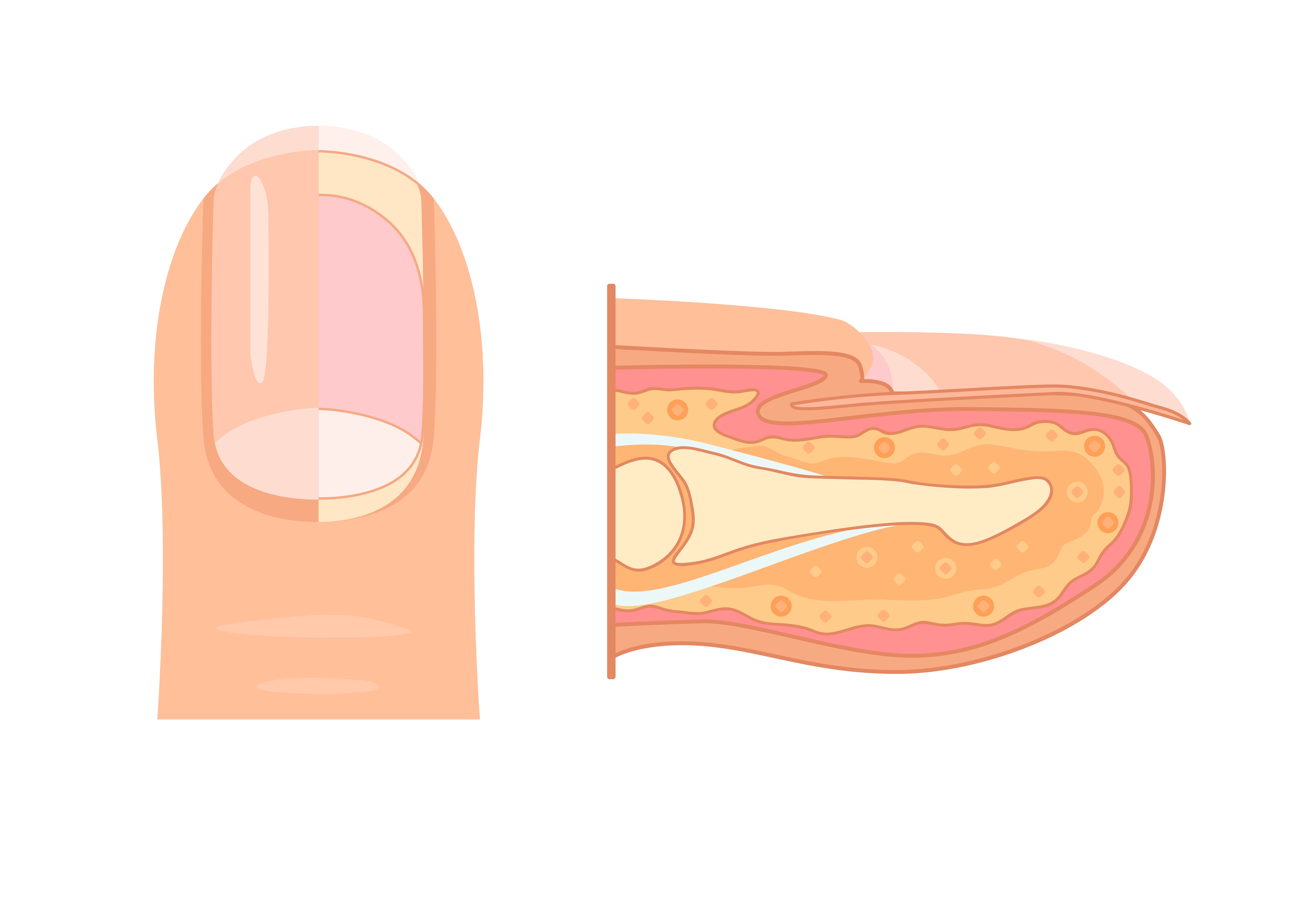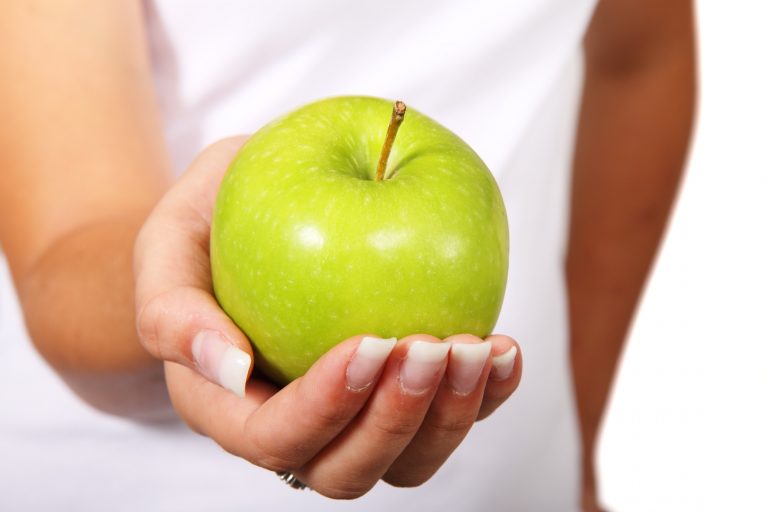Introduction
The condition of our nails can sometimes reflect the state of our general health. If after depression of the finger nail it does not quickly return to a pink colour after turning white, it could be argued that this is a precursory sign that the individual may be dehydrated or in shock. The state of our finger nails has been used as a diagnostic tool since ancient times.
Deep grooves normally form due to age, but they can also result from disease. Discolouration, thinning, thickening, brittleness, splitting, grooves, small white spots, clubbing, flatness and ‘spooning’ can indicate illness in other areas of the body, nutrient deficiencies, drug reaction or poisoning, or sometimes just local injury. Nails can also become infected with fungus.
Structure and function of nails
Our nails are made from the tough protein keratin and it can be argued are a form of hair, and like hair are an appendage of the skin. The nail plate is essentially what we know as our finger nail. Underneath the nail plate is the matrix that contains nerves, lymph and blood vessels. Our nail grows from the matrix, where new nail plate cells are made and as long as sufficient nutrition reaches the matrix then the nail continues to grow.
Although finger nails (and toe nails) can become the focus of fashion such as cutting and shaping and applying nail varnish etc., their biological function is to protect the ends of our fingers (and toes) from injuries, to enhance precise delicate movements and act as a tool, and to enhance sensitivity of the fingertip, by acting as a counterforce when the finger touches an object.
The length and growth rate of our nails is related to the length of the fingers (and toes), hence why our index finger nails grow faster than the nail on our little finger. Nails on the hand grow up to four times faster than toe nails. Finger nails grow on average 3 mm a month, and this is dependent on ages, gender, season, exercise level, diet and hereditary factors. Nails grow faster in the summer than any other season!

Nutritional requirement for healthy nails
Because nails are made from the same protein as hair their nutritional requirements are very similar. It’s important to consume enough protein to ensure the body can synthesise keratin from the amino acids cysteine, arginine, lysine and methionine. Most protein food sources contain these amino acids including beef, chicken, pork, fish, eggs and dairy products as well as plant sources such as beans, lentils, wholegrains, seeds and nuts, tofu and hummus.
In addition, plenty of vitamins, especially A, B complex, C and D are important and minerals, especially zinc, iron, copper, and selenium. These can all be obtained from a healthy balanced diet rich in fruit and vegetables, nuts and seeds. The mineral iodine is important for healthy nails. Main food sources are fish and dairy products, but if you are vegan it can be difficult to obtain from the diet, so consuming iodized salt and green leafy vegetables including kelp/seaweed is advised. Deficiencies in our diet can results in specific nail conditions.
Vitamin deficiency
Whilst vitamins are readily available from a healthy balanced diet, some individuals may still suffer from deficiency, this is largely due to consuming a poor diet because of e.g. health inequalities, specific food choices, and restrictive diets or medication, alcoholism and malabsorption such as in the elderly. Vitamin deficiency in some cases can take from weeks to up to a year to show, this is because water soluble vitamins such as C and B group vitamins cannot be stored in the body, so a deficiency starts to show after a few weeks, whereas oil soluble vitamins such as A, D, E and K are stored by the body and therefore may not show for up to a year.
A deficiency in the B vitamin biotin, can cause thinning of nails and nail infections, as well as splitting and peeling of the nail. Whilst a folate deficiency causes changes in fingernail pigmentation. Pellagra a disease associated with vitamin B₃ (niacin) deficiency can result in the nails developing grooves known as Beau’s lines. A vitamin B₁₂ deficiency results in hyperpigmentation of the nail where a brown line develops along the length of the nail – this can sometime be more prominent in dark skinned individuals. Scurvy a vitamin C deficiency shows up in nails as splinter haemorrhages, which display as red to black think red lines under the nail plate. Soft nails are associated with deficiencies in vitamins A and D, and vitamin E can help with the changes associated with yellow nail syndrome.
Mineral deficiency
Nails that become flat or concave (spoon) in shape are a classic sign of iron deficiency anaemia. Iron deficiency also results in brittle nails, and they become more susceptible to breakage. A deficiency in calcium can show up in nails in various ways, the detachment of the nail from the nail matrix is one example, brittle and soft nails is another. It is also common to see transverse opaque white lines across the nail as a result of injury and low calcium levels, as well as zinc deficiency. Zinc deficiency is also associated with brittle nails and grooves along the length of the nail. A magnesium deficiency can result in soft, flaky nails which are inclined to split, whilst low selenium levels can turn nails white. Clubbing of nails is associated with cretinism and is a sign of iodine deficiency.
Conclusions
As with any poor diet, deficiencies can show up in different ways. When it comes to the health of our nails, they suffer with different conditions when we are deficient in certain, vitamins, minerals or even macro nutrients such as protein. Supplements can be useful in ensuring we keep our nails healthy, but should not be used as a replacement for a healthy balanced diet, but to support it.
Reference:
Seshadri, D., De, D. (2012). Nails in nutritional deficiencies. IJDVL. 78 (3), 237-241. Doi: 10.4103/0378-6323.95437






